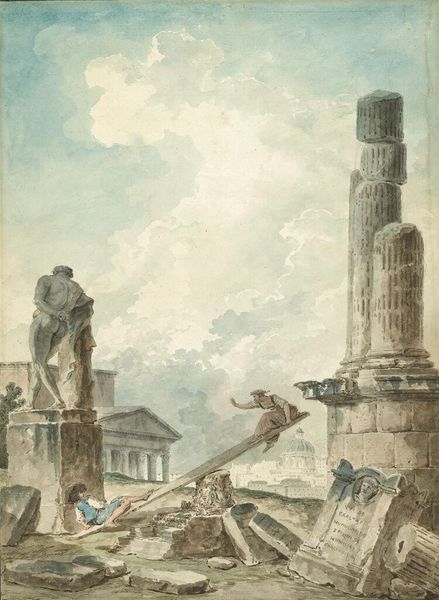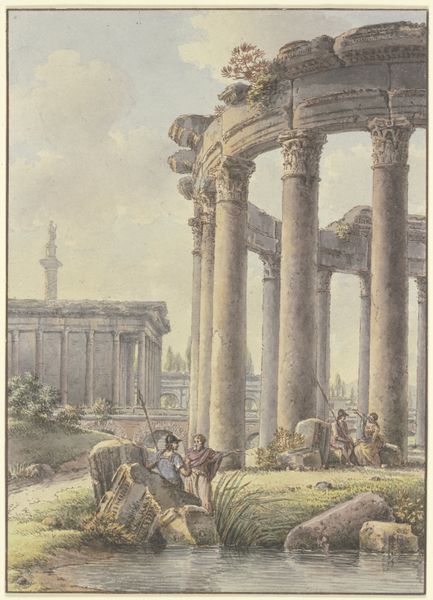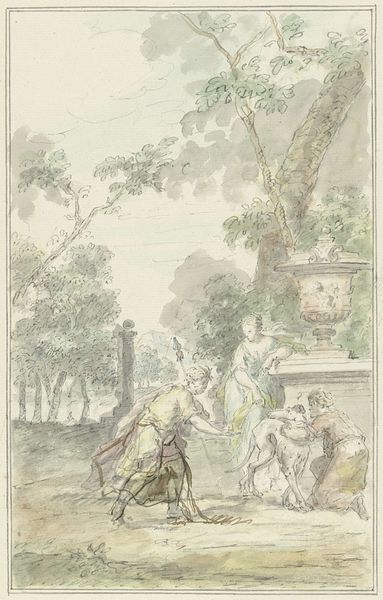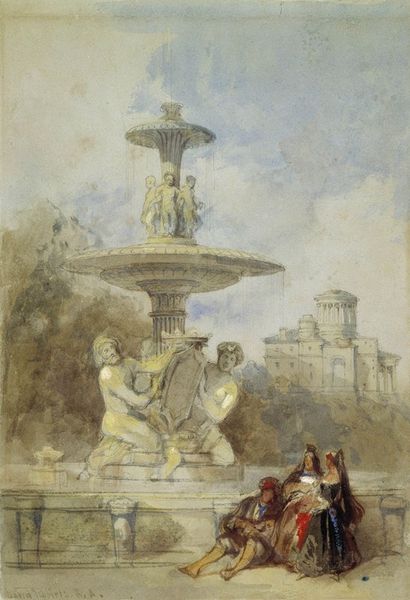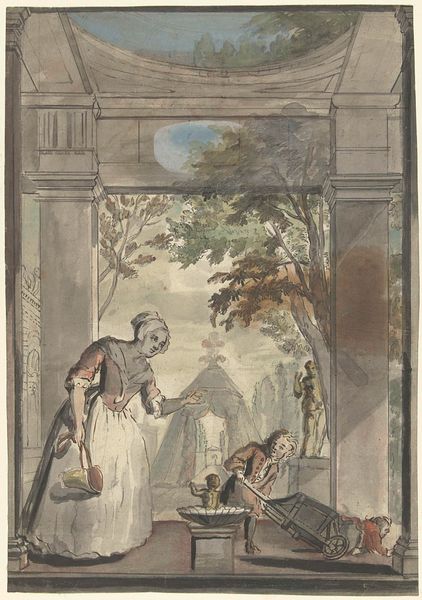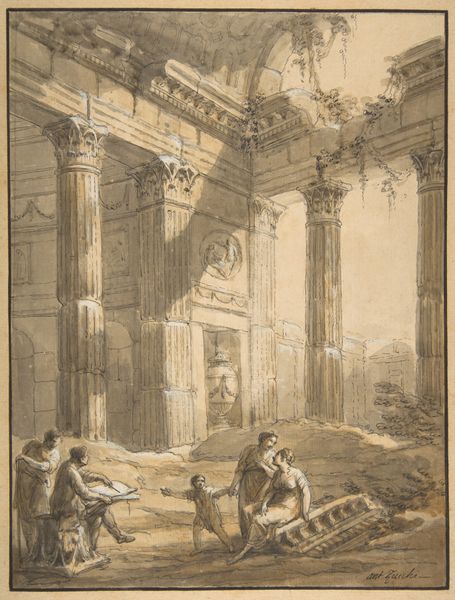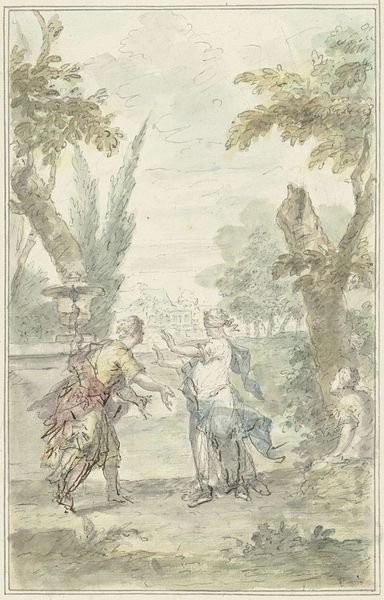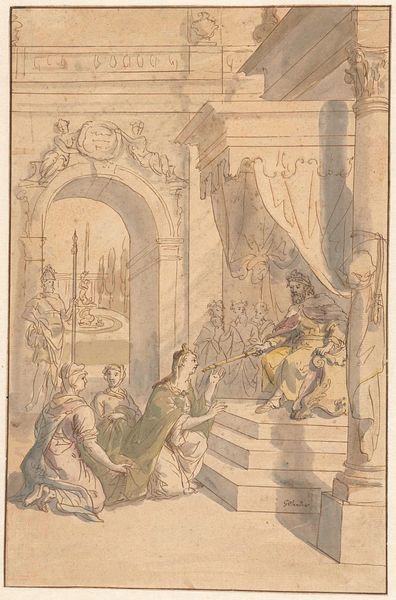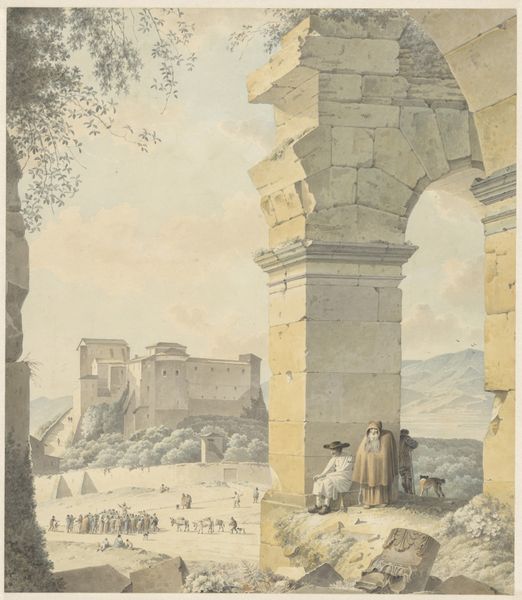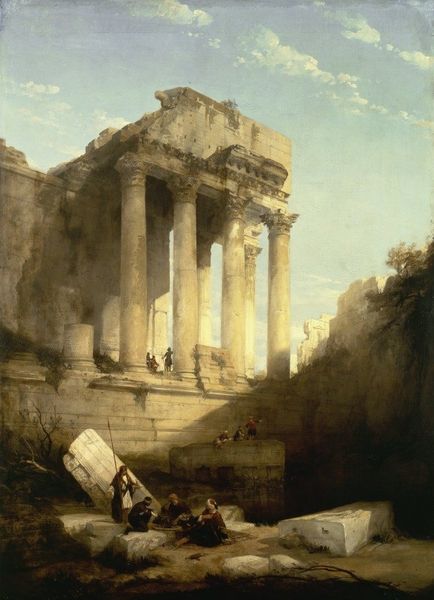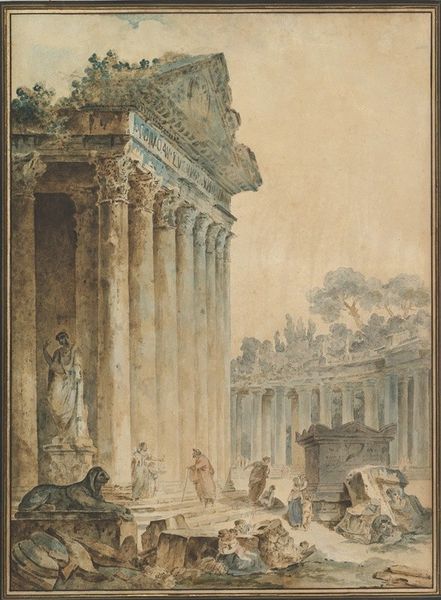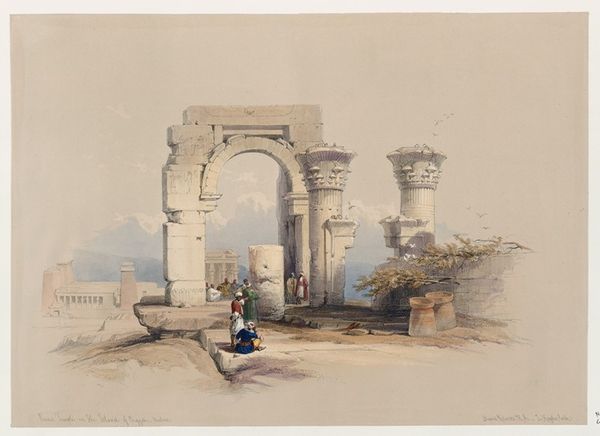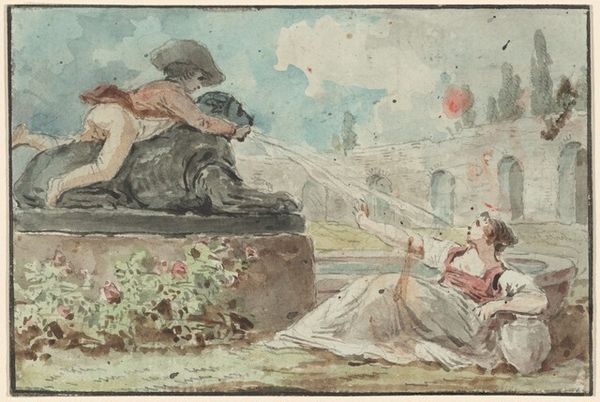
Copyright: Public Domain: Artvee
Editor: This is Hubert Robert's "Charitable Ladies," a watercolor from around 1780-1785. The color palette feels so muted, almost grey-scale, yet it depicts such a lively scene. What do you see in this piece? Curator: The materiality of the watercolor is significant. The wash technique speaks to efficiency, to a quicker method of image production suitable for a burgeoning art market. And what are we seeing? A stark contrast – the ladies of leisure, framed by architectural details, playfully ‘fishing’ for the less fortunate performing below. Consider how the artist has crafted an image not only of charity, but of the *performance* of charity for their amusement, reflecting on labor and class disparity during this period. Editor: That’s fascinating. The "fishing" aspect feels like such a powerful visual metaphor, suggesting a kind of detachment or even manipulation in the act of giving. It makes me think about how the elite classes viewed and interacted with the poor at that time. Curator: Precisely! The labor that underpins this leisurely transaction. The artist shows us the means of producing art, as well as revealing a social commentary by spotlighting a stark division in the labor practices, so evident between these two worlds contained in a single sheet of paper. We are reminded that even charity can be commodified. Where does that leave us? Editor: This makes me think about contemporary art that addresses similar themes of wealth disparity and the commodification of social issues. It gives Robert's work a renewed relevance, looking at what issues were raised at that moment of creation, but that continue to affect us today. Thank you for the different points you raised, the piece suddenly gained a new depth to it. Curator: My pleasure, the exploration of artistic materials and societal factors helps understand how we give form and meaning to artwork.
Comments
No comments
Be the first to comment and join the conversation on the ultimate creative platform.
